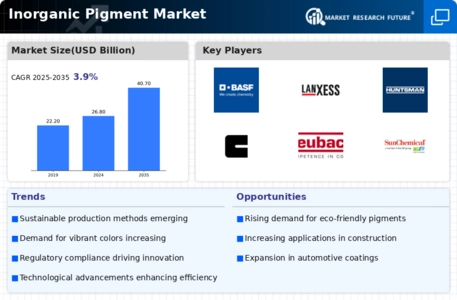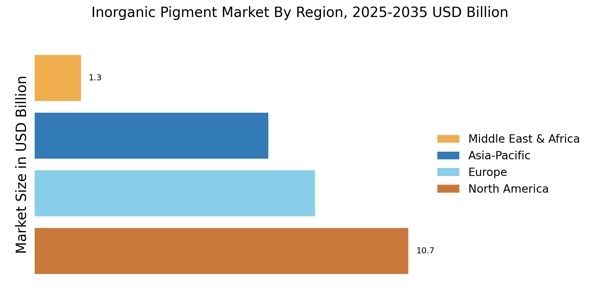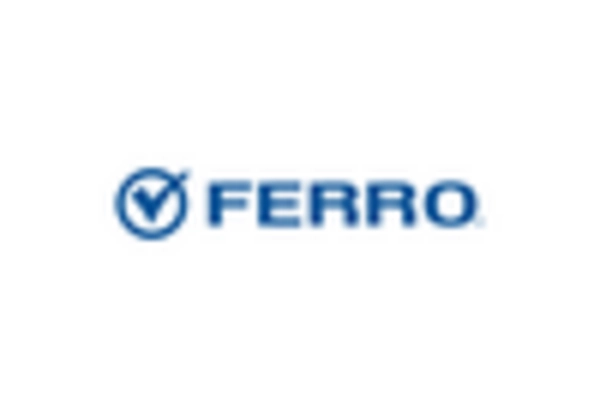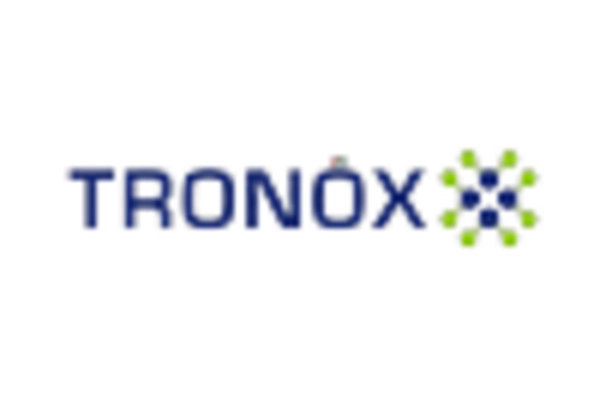Regulatory Compliance
Regulatory compliance is becoming increasingly critical within the Inorganic Pigment Market. Governments and regulatory bodies are implementing stringent guidelines regarding the use of certain pigments, particularly those that may pose health or environmental risks. This has led to a shift towards safer alternatives, prompting manufacturers to reformulate their products to comply with these regulations. For instance, the restriction of lead-based pigments has resulted in a significant transformation in the market, pushing companies to innovate and develop compliant inorganic pigments. As regulations continue to evolve, the market is likely to see a growing emphasis on compliance, which could drive innovation and create opportunities for manufacturers to differentiate their products.
Technological Innovations
Technological advancements are playing a pivotal role in shaping the Inorganic Pigment Market. Innovations in production processes, such as the development of advanced milling techniques and surface treatments, are enhancing the performance and application of inorganic pigments. These technologies enable manufacturers to produce pigments with improved color strength, stability, and dispersibility. Furthermore, the integration of digital technologies in pigment formulation is allowing for more precise control over product characteristics. As a result, the market is likely to see an increase in the adoption of high-performance inorganic pigments across various applications, including coatings, plastics, and construction materials. This technological evolution is expected to drive market growth and expand the range of applications for inorganic pigments.
Sustainability Initiatives
The increasing emphasis on sustainability within the Inorganic Pigment Market is driving demand for eco-friendly pigments. Manufacturers are focusing on developing pigments that are non-toxic and derived from natural sources. This shift is not only in response to regulatory pressures but also consumer preferences for sustainable products. As a result, the market is witnessing a rise in the production of inorganic pigments that meet environmental standards. For instance, the use of titanium dioxide, a widely used inorganic pigment, is being scrutinized for its environmental impact, prompting companies to innovate and create more sustainable alternatives. This trend is expected to enhance the market's growth as industries seek to align with sustainability goals.
Growth in Emerging Economies
Emerging economies are presenting new opportunities for the Inorganic Pigment Market. As these regions experience rapid industrialization and urbanization, the demand for pigments in construction, automotive, and consumer goods is on the rise. Countries in Asia and Latin America are witnessing significant growth in infrastructure development, which is driving the need for high-quality inorganic pigments in paints and coatings. Market data indicates that the construction sector in these regions is expected to expand significantly, further fueling the demand for inorganic pigments. This growth in emerging markets is likely to provide manufacturers with new avenues for expansion and increased market share, as they seek to capitalize on the burgeoning demand.
Rising Demand from End-Use Industries
The Inorganic Pigment Market is experiencing a surge in demand from various end-use sectors, including construction, automotive, and packaging. The construction industry, in particular, is a significant contributor to this demand, as inorganic pigments are extensively used in paints, coatings, and concrete products. According to recent data, the construction sector is projected to grow at a compound annual growth rate of over 5% in the coming years, which will likely bolster the demand for inorganic pigments. Additionally, the automotive industry is increasingly utilizing these pigments for their durability and color retention properties. This rising demand from diverse sectors is expected to propel the growth of the inorganic pigment market.


















Leave a Comment